The adventure began the moment the cars were chosen for this journey, through the beautiful yet rugged landscape of South America. Before they set off on the Austral Highway from Puerto Montt (Chile) to Ushuaia (Argentina), the 2009 and 2010 Cayenne had already clocked up more than 80,000 miles.
Each was equipped with off-road accessories available from Porsche Classic, including off-road wheel sets, special decals as well as roof racks and a roof tent all available from Porsche Tequipment.
The expedition began towards the east
Although the final goal was to reach the southernmost city of the American continent, the expedition began towards the east in order to take in Bariloche, the Argentinean town that is closely linked to the history of Patagonia itself. After leaving Puerto Montt, the road borders Llanquihue, the first of many lakes of different colours that separate the two countries. A few minutes in and the striking two-car convoy paused to listen to the roar of the Petrohue waterfalls and enjoy its blue waters under the silent gaze of the 8,700 foot sugar cone that is the Osorno volcano.
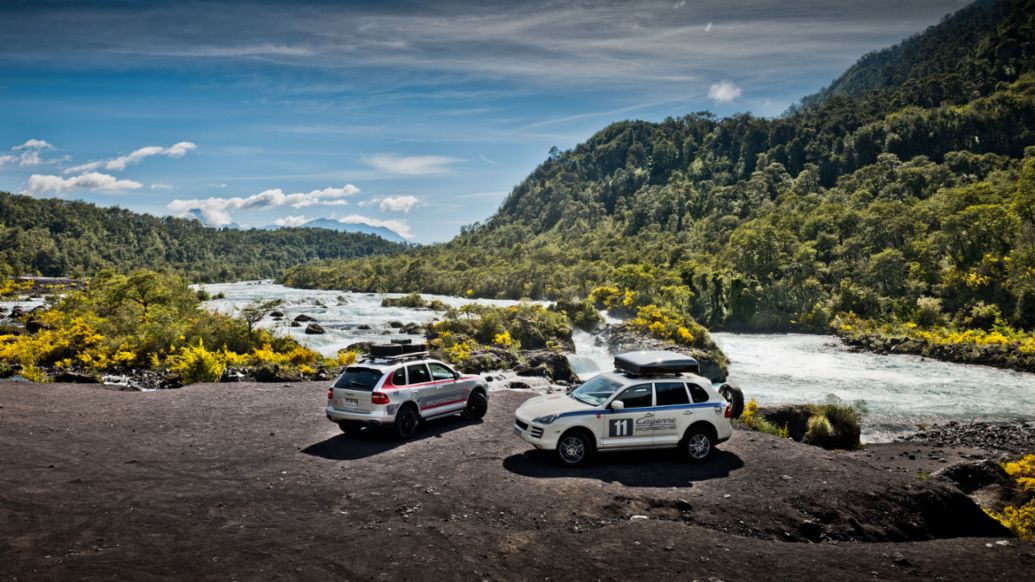
The curvy roads in the Andes Mountains and the natural landscapes offered by the Puyehue, Nahuel Huapi and Perito Moreno national parks made for a unique start to the trip, not only for the crew but also for the two Cayenne, which despite their age, appeared quite at home in the dramatic scenery. 290 horsepower offered by their 3.6 liter V6 engines and 273 lb.-ft.of torque is sufficient to negotiate the less than perfect roads.
Twenty-four hours are not enough to get to know the 'Argentine Switzerland' in depth, but one can at least enjoy the Nahuel Huapi lake, see the Cathedral Mountain in the background, eat handmade chocolates and the famous alfajores with dulce de leche. A glass of local red wine is another must, as well as a Patagonian lamb asado (barbecue).
Snow-capped mountains and grizzly fjords
On the way back to Puerto Montt, the expedition was once again welcomed by a leaden sky, a product of the constant evaporation of the Pacific waters that face the cold temperatures of the Andes. With this panorama, some rain and the squawking of the seagulls that constantly fish in the port, the two Cayenne took national route 7, also known as Austral Road, one of the most beautiful roads in the world due to the extraordinary landscapes it crosses.
In less than 30 miles, the cars arrived at La Arena, where they were transported by ferry across the Reloncavi estuary before continuing south. Snow-capped mountains and grizzly fjords provided for a breathtaking background all the way. At Cholgo, the convoy boarded another boat, this time bound for Pillán, the three-hour trip accompanied by icy winds, despite it being summer.
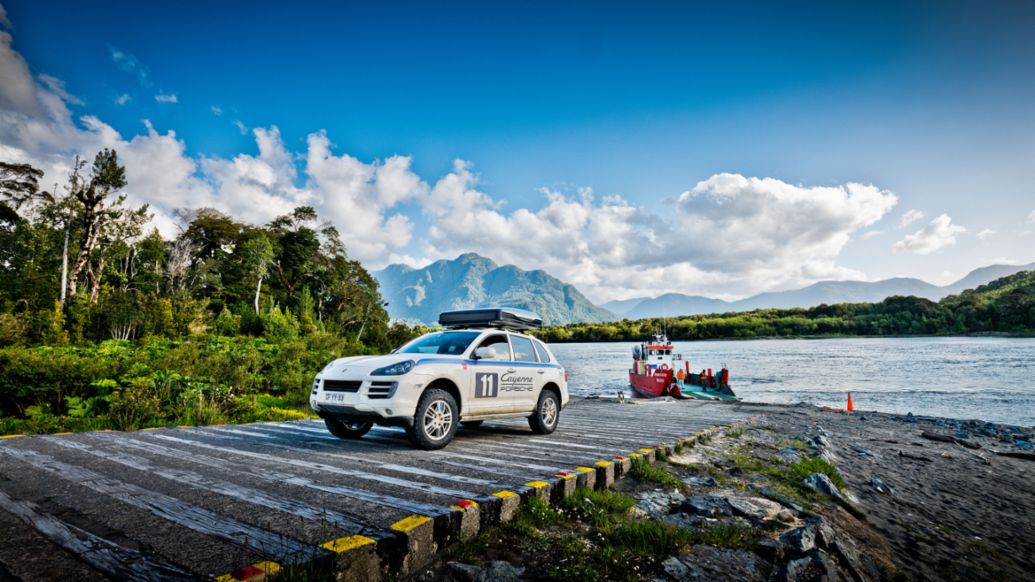
After another stretch of road, the SUVs caught a third ferry at the mouth of the Reñihué River, before rolling back onto route 7. The shadows caused by the 8,038 feet the Michinmahuida volcano accompanying them for the last few miles before Chaitén, the stopover for the night.
In Chaitén, several sinuous and cold rivers converge where salmon and trout abound. They extend through green valleys and flow into large sand banks on the rugged, grey-hued Pacific coast. The city, hit in May 2008 by the eruption of the volcano that bears the same name, is today home to about 700 inhabitants and has lost the vigor it had when more than 5,000 people lived there before the avalanche of mud and lava that buried the city.
Leaving Chaitén, the Cayenne’s offroad tyres crunched the gravel of the Carretera Austral. The white peak of a new volcano, the Corcovado, silently watched the passing of the two Cayenne models from a height of 7,545 feet. About 30 miles later, the emerald-green waters of Lake Yelcho appeared. Its 72 miles of surface area forces the Austral Highway to open its way towards the west.
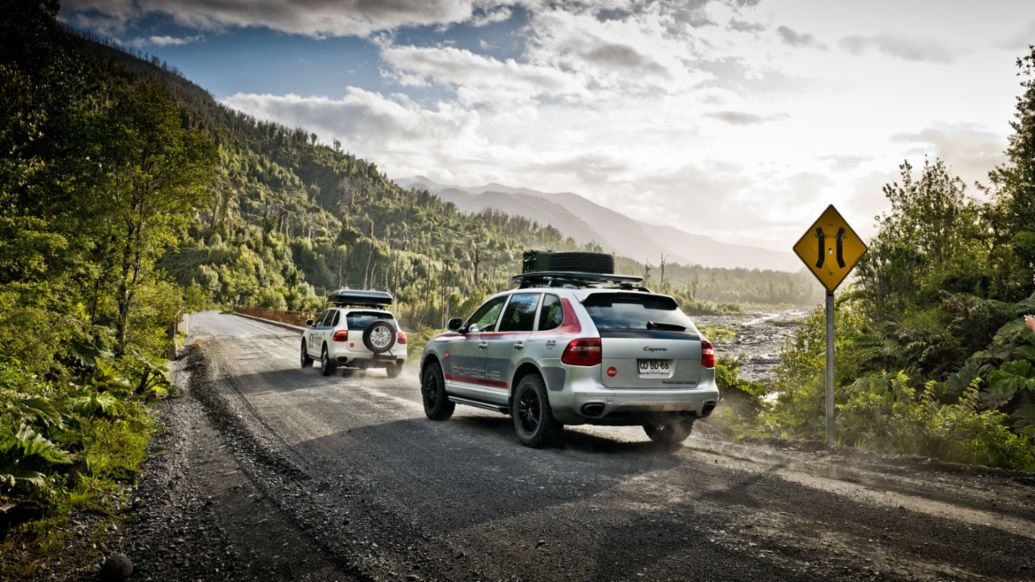
The Yelcho River must be crossed by an old suspension bridge, the deteriorated concrete columns of which support the rusty cables of a passage that is barely wider than a truck. Crossing the dark waters is the end of civilization: at this point the expedition embarked on a true adventure, where nature calls the shots.
Muddy sections that make the wheels slip, holes in many parts of the track and the endless gravel make this section resemble a rally. The cars did not, however, complain. On the contrary, the team was reminded that between 2006 and 2008 the Cayenne drove more than 6,200 miles during the Trans-Syberia Rally from Berlin to Lake Baikal in Russia.
The pace of life in this Pacific region is slow. Its few inhabitants say that "he who hurries in Patagonia wastes his time". Therefore, a detour to the west to the Piti-Palena fjord was taken, while others enjoyed fishing in the lakes, rafting in rivers, watching dolphins and whales, kayaking in the bays, riding horses in the valleys or warming up in the hot springs. Piti-Palena is a good place to savour a thick, creamy clam chowder or eat spaghetti-like fried fish strips with French fries. It is also a good place to spread out the Porsche Tequipment rooftop tent on the roof of one of the two SUVs and sleep under the stars in uninterrupted silence.

The next day, the two Cayenne again joined route 7 and continued their way south. The thick vegetation did not change and the rocks on the road continued to punish the underbody of the cars. The arrival in the valley of the Cisnes River brought a temporary relief with the reappearance of a paved road. Closer and closer to Tierra del Fuego, the expedition paused for a night in Coyhaique, a city with almost 60,000 inhabitants that looks like a metropolis in the middle of nowhere.
Spectacular lakes and rivers of glacial origin
The road climbs again through the Andes and the gravel again whipped the protective plates and the Porsche Tequipment running boards that had been fitted to the hero cars. The spectacular lakes and rivers of glacial origin, with their greenish or bluish waters, also reappeared on the long stretch all the way to Cochrane.
After a detour to the Tortel Fjord, the expedition headed south across the border between Chile and Argentina. The majestic Cerro Torre appeared at this point, standing 10,279 feet tall, with its white peaks. The trip continued for hours and hours with landscapes so majestic that they ended up being almost monotonous.
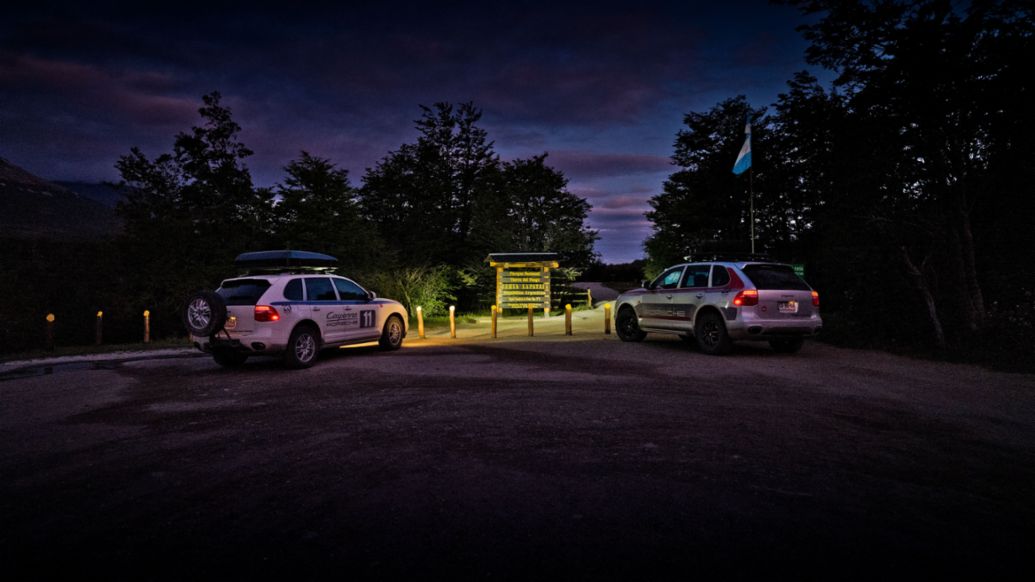
Suddenly, the Perito Moreno glacier appeared and changed all of that. Its white and bluish ice, five kilometres in frontal length and up to 197 feet high, rests in the southern part of Lake Argentino, in Los Glaciares National Park. The creaking of the glacier and the collapse of one of its ice sheets reminded the team of the ongoing threat of global warming.
With this image in their minds, the convoy continued across the vast Argentinean pampas, and the somewhat lunar landscape. Gravel and paved roads led the two Cayenne back to the Torres del Paine National Park in Chile. Seeing the mountains towering more than 9,843 feet above the frozen lakes, it was easy to understand why the native Tehuelches called them 'towers of blue sky'. Their granite peaks saturated with the colors grey, ochre, orange-red, ivory, silver and brilliant white.
Leaving the 'towers' behind, the two Cayenne went in search of Puerto Natales on the national route 9 before continuing to Punta Arenas in the Strait of Magellan, the road here stretching almost endlessly through gently undulating terrain.
Suddenly the Cabeza de Mar Lagoon appeared, a first salute to the Atlantic Ocean. A channel in the north of the large body of water connects to the east and leads to the smaller Verdana Lagoon, which is connected to the Strait of Magellan by a passage approximately three kilometres long. This is the roughly 373 mile passage between the Atlantic and the Pacific that the Portuguese navigator Ferdinand Magellan discovered in 1520.
The Haru Oni eFuels pilot plant
A few miles further south, the blades of a wind turbine connected to several industrial plants were in motion. This is the Haru Oni eFuels pilot plant, where Porsche and several partners are developing the synthetic fuel. Although the transition to electromobility is a top priority and Porsche has the ambition to deliver more than 80 per cent BEVs in 2030, the company is also focusing on eFuels. Renewable, synthetic fuels can potentially make combustion engines close to carbon neutral.
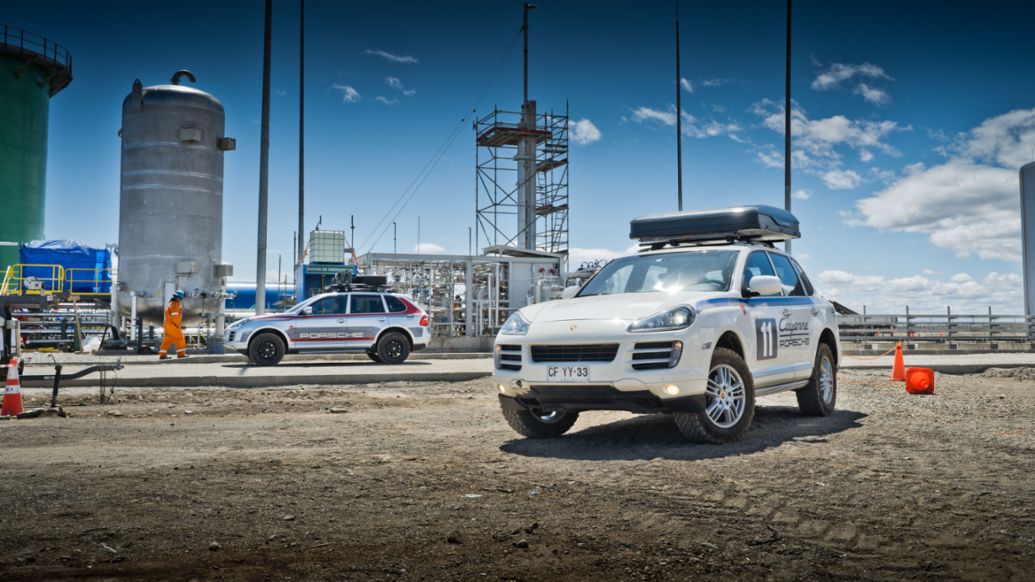
Leaving the Haru Oni plant and taking the ferry linking Punta Arenas with Porvenir across the Strait of Magellan, the smell of oil from the ship's engines made it clear that it is not only cars that need to look for alternative forms of propulsion.
And while for now it is not feasible to manufacture ships or aeroplanes with electric motors, synthetic fuels could also be a great solution for those industries.
The two Cayenne disembarked the ferry and began the last leg of their adventure that would take them back across the border into Argentina and on to the place that claims the title of being the southernmost city on the American continent. The sign at the entrance welcomed the convoy with a reminder of exactly where they had arrived: 'USHUAIA, end of the world’.
Info
“Curves 20 – Patagonia” is now available in stores.
More information: https://www.curves-magazin.com/en/
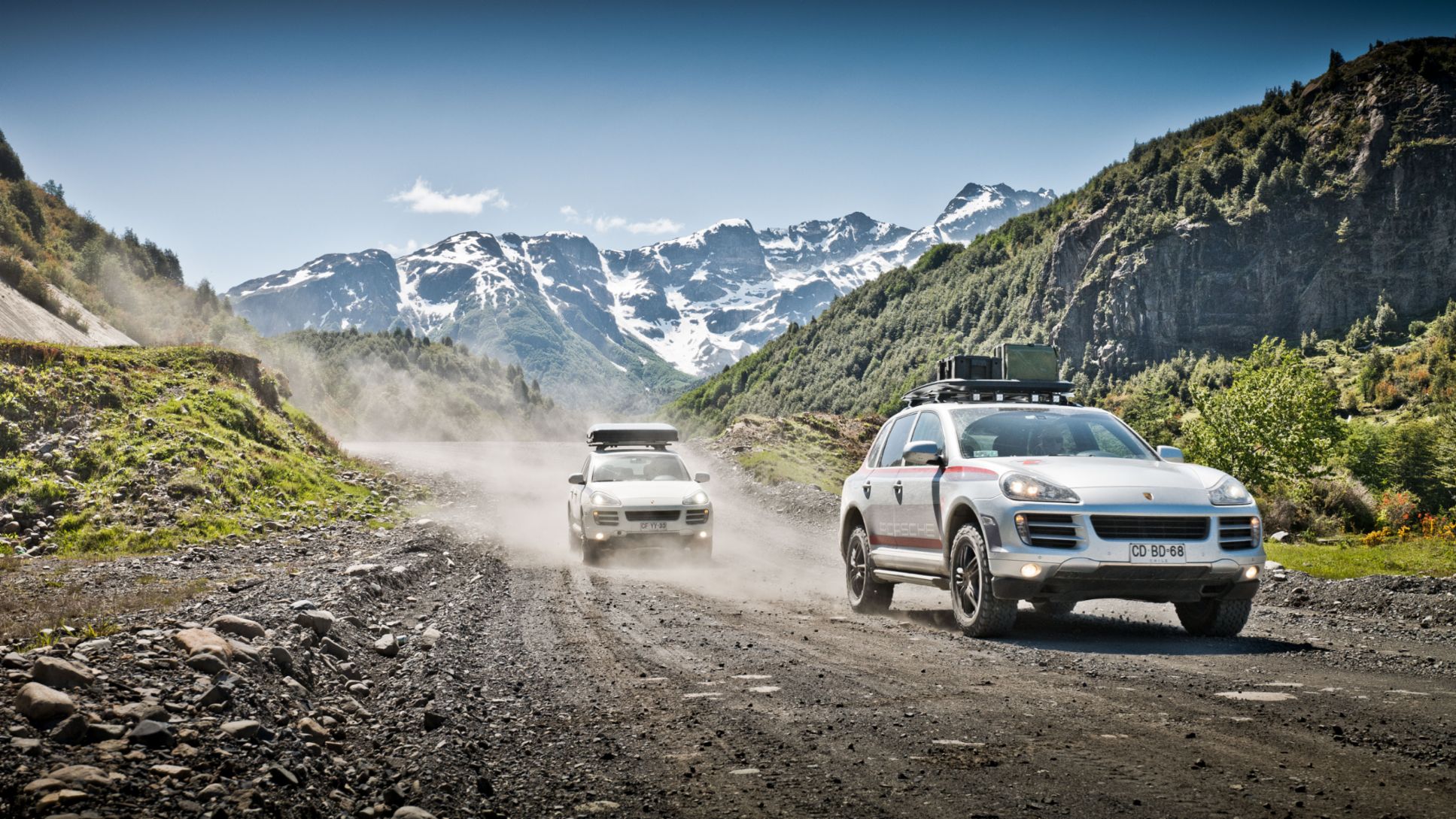




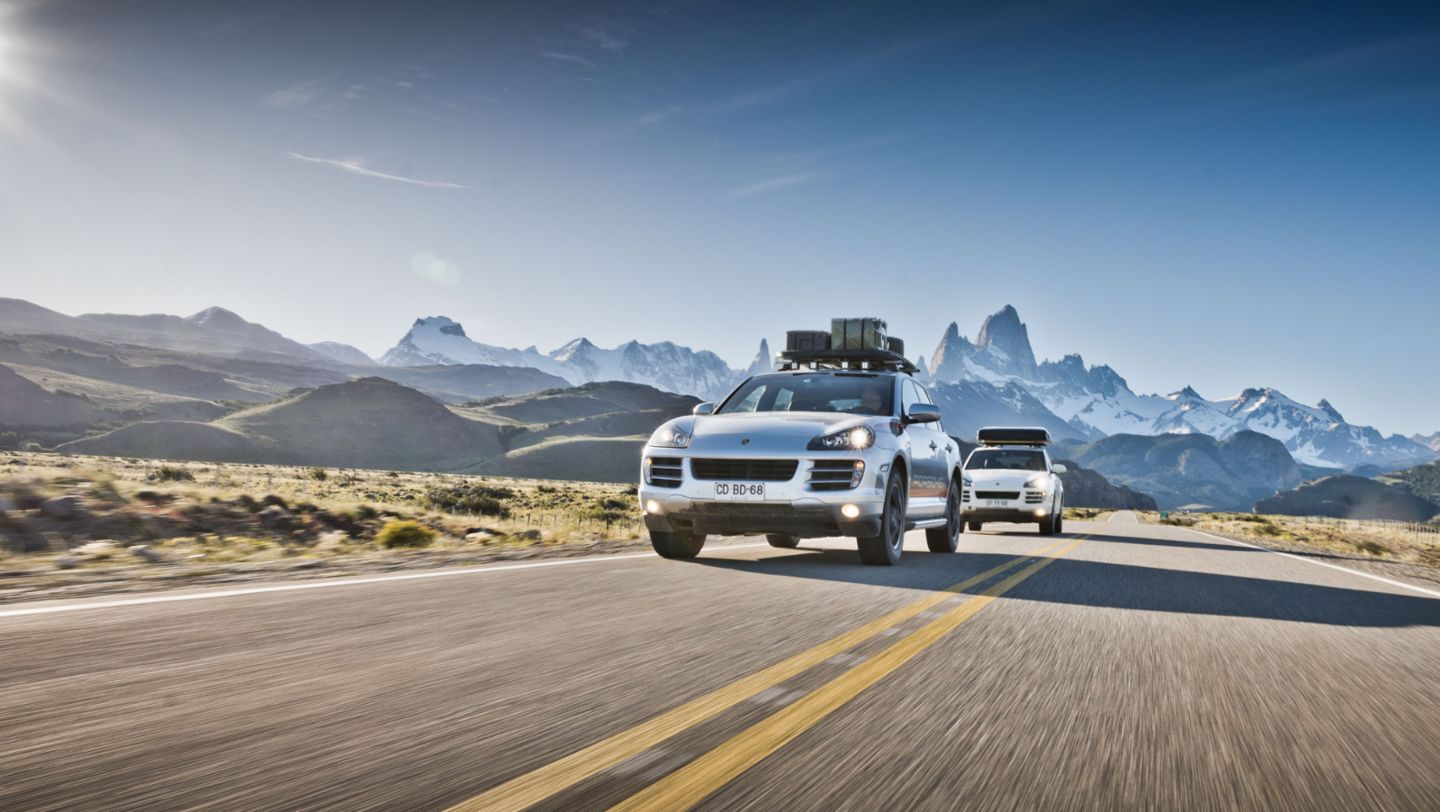

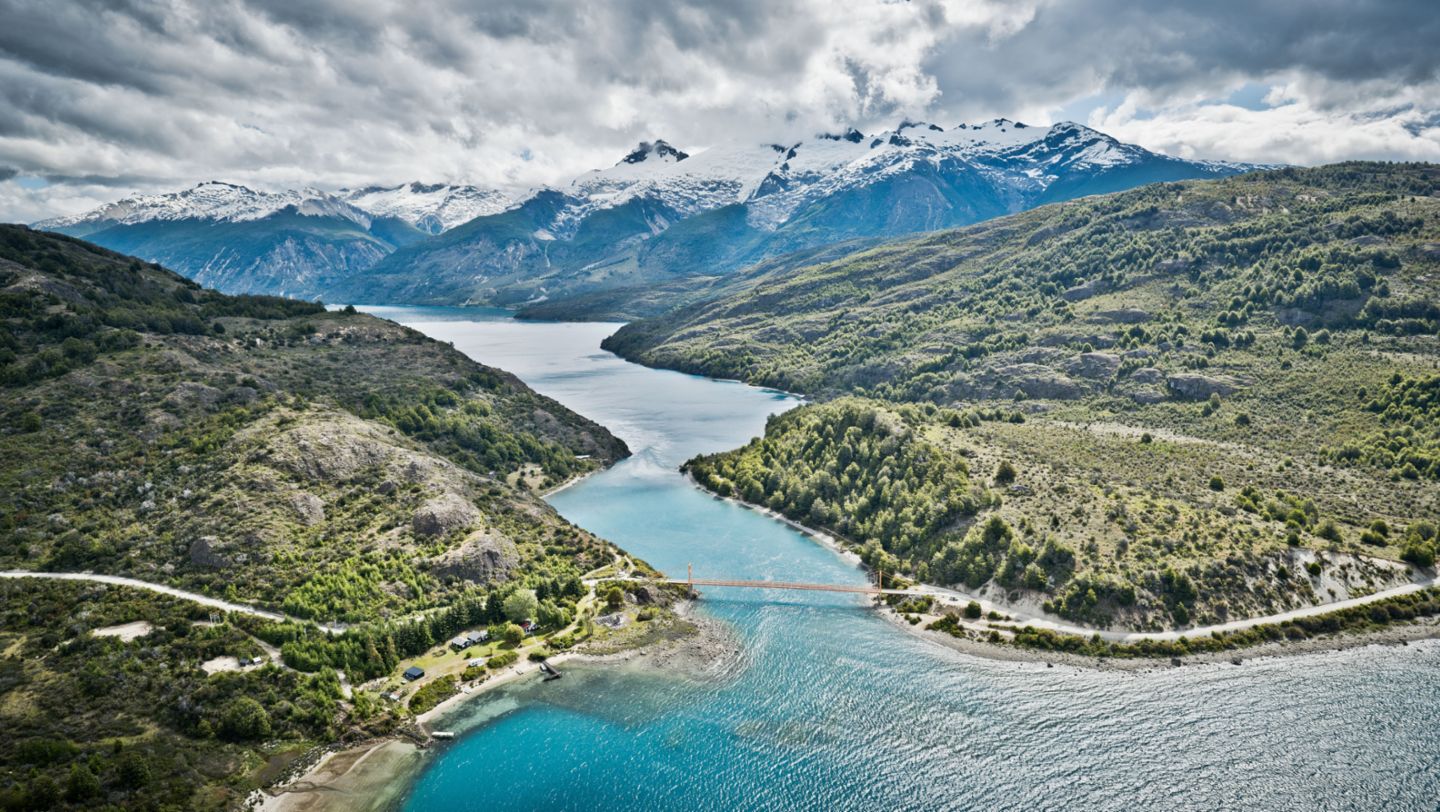
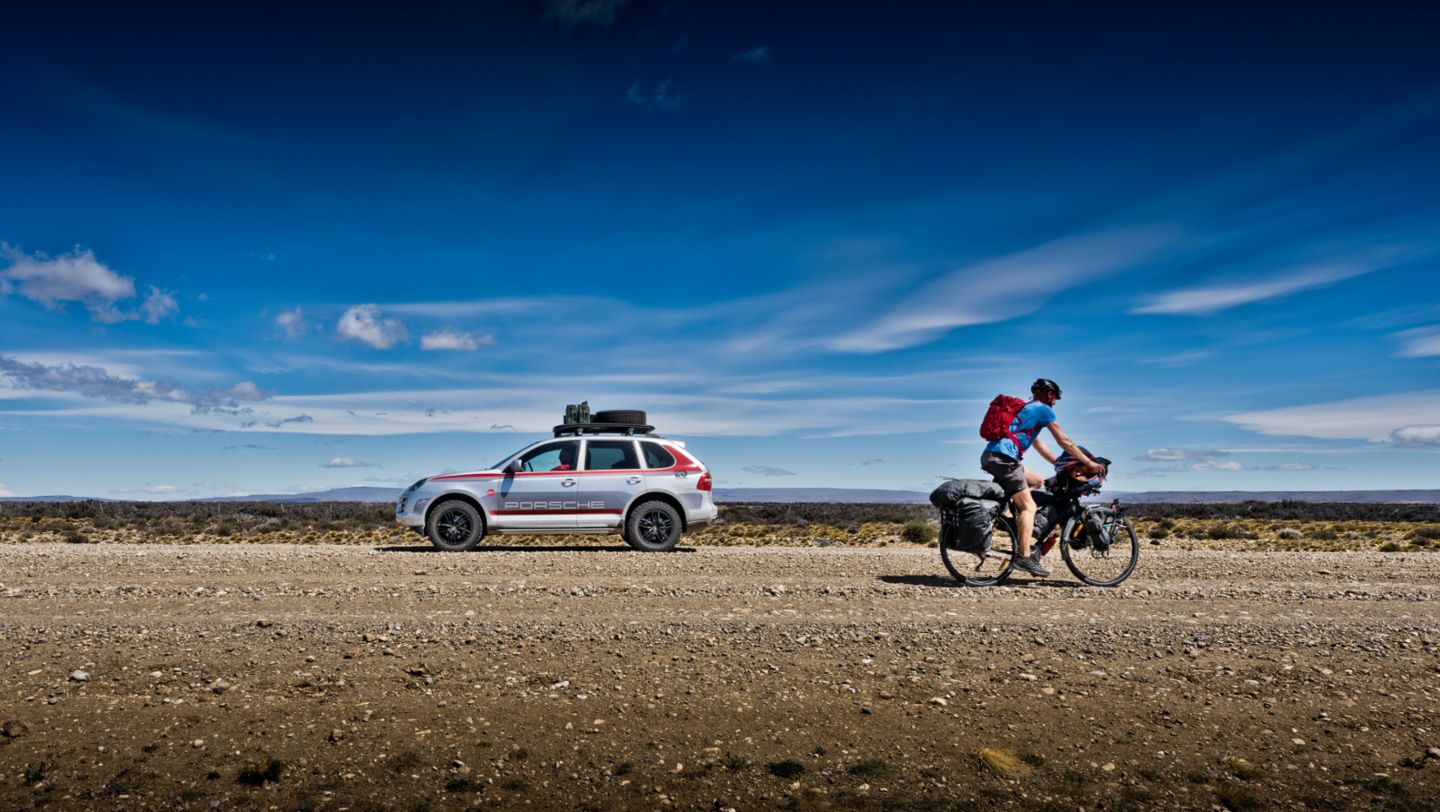


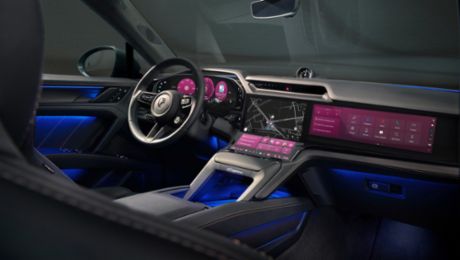

.jpg/jcr:content/CARMINE_RED_PANAMERA_GTS_001_0K2A3620%20(1).jpg)
